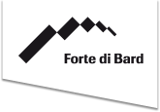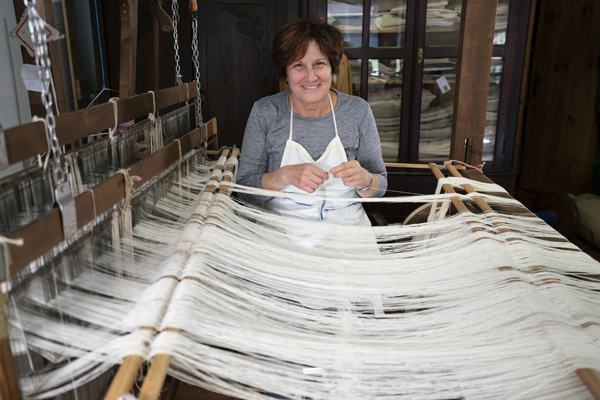The Lou Dzeut cooperative was founded in 1989. Maria Gontier has been its president for almost twenty years. She has toiled with passion, dedication and perseverance to ensure that the cooperative can continue upholding traditions, by offering local women the chance to pursue work that, still to this day, as it did in the past, significantly supplements the family income. Keeping the textile tradition alive, the Lou Dzeut Cooperative carries on the renowned craft activity by weaving hemp cloth by hand, producing and embroidering trousseaux and textiles that reflect a history and established memory, to offer unique, high-quality products. Naming the cooperative “Lou Dzeut” was no random choice. It has two meanings in the local dialect: a “swarm”, which as such could have flown off and lost its way or, in the beehive, started a frenzied life of commitment, pursuit and teamwork; or a “shoot”, in the hope it would grow into a tree able to provide foliage, flowers and fruits for the local community.
Today, the cooperative has antique wooden handlooms. When weaving on these looms, the weaver’s hands and feet move arrhythmically, like the gears in a machine. It is still an old-fashioned, laborious and challenging task, but a charming one, as quality comes before quantity. When performing the highly accurate work, the embroiderers and seamstress draw on the extensive collection of samples that made up the trousseaux of the families of yesterday. To this day, people are still fascinated by these practical, robust and simply elegant garments and the skill that goes into making them. There are three weavers, one expert seamstress and a few embroiderers and lace makers. All are women, some on the payroll and others on collaboration contracts. Their jobs provide a significant source of income for these women who would struggle to find other satisfying jobs in these outlying areas to suit their needs, family commitments and farming activities.
To find out more
Wool and hemp were the raw materials directly produced and processed by the people, from which the mountain communities obtained textile fibres to make clothing, trousseaux and work covers according to their needs and requirements. A fibre stronger than wool, and more wear-resistant, was obtained from hemp, a raw material grown extensively in the Aosta Valley as throughout the entire Alpine region, close to waterways. A thread was spun from this fibre which, depending on how fine or coarse it was, would be woven into linen and items of clothing, cloth for laundry and hay, cushions for transport, and sacks. It was also used to produce string to sew the soles of slippers, and to make twines and bindings used extensively in work on the farms.
For climate reasons, hemp had already stopped being cultivated in Champorcher in the late 18th century, but people carried it on their backs from where it was grown to this valley with its abundant supply of water from the Ayasse stream. The bundles were stacked together and retted, held down by large stones in natural inlets in the rock and depressions along the stream, so as to have a continuous supply of fresh running water to ensure the proper maceration of the plants. On completion of a series of processes – beating to strip the fibres from the woody core, combing and carding – a fibre was obtained for spinning the thread, followed by weaving. In past centuries, weaving was one of the major activities of the Champorcher community. During the long winters, wool cloth, but above all hemp cloth (teila de meison), was spun and woven for personal use and consumption but also for others, as a means of supplementing the income from farming.
In Autumn, before the village was cut off by the snow from Arnad, Issogne and Verrès, hemp was brought in balls and skeins – passing via Plan Fenêtre or even from Chambave passing via Envers, or from the Lower Valley and the Canavese – to be woven by the various families of Champorcher. It was returned in the spring in the form of fabric. The looms were sturdy, made of larch wood by local carpenters. They were positioned in the stalls, where the constant humidity due to the presence of the animals was the essential condition for weaving hemp thread, which, spun by hand, was naturally coarse, inflexible and fairly rough. Tasks were shared out within each family: the men were responsible for carding and preparing bobbins for the shuttle, while women would spin and weave.
INFO
The Lou Dzeut Cooperative
Località Chardonney
11020 Champorcher (Ao)
T. + 39 0125 37327
info@tessereamano.com



